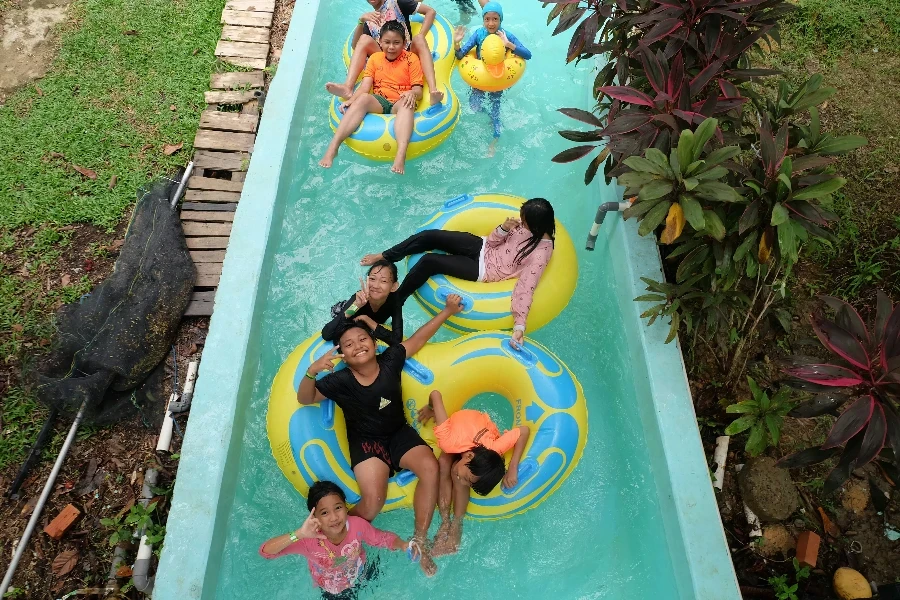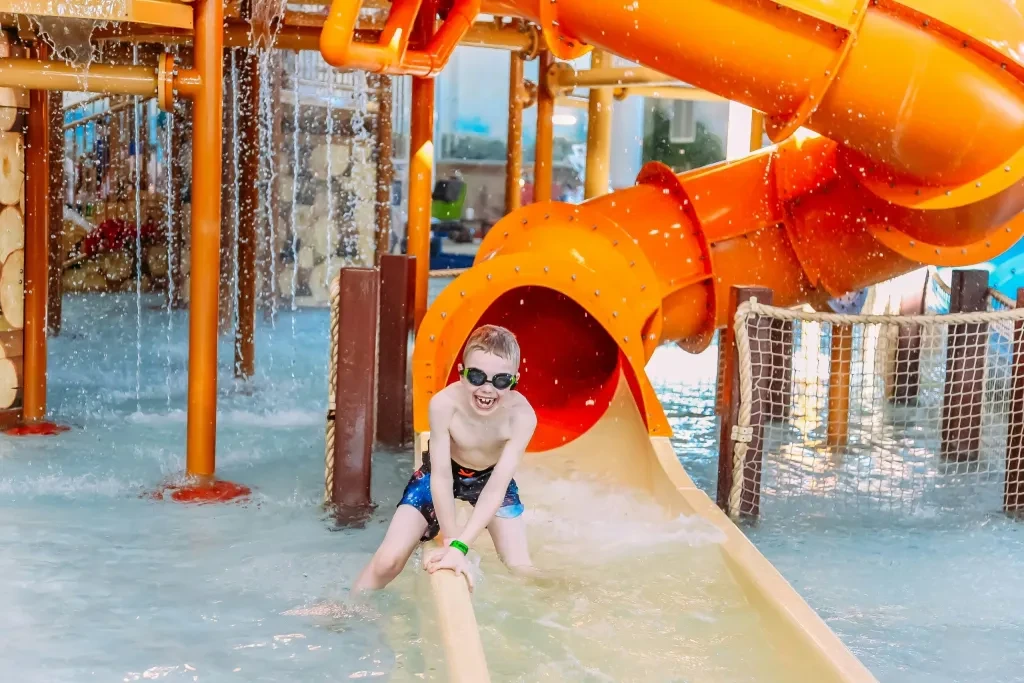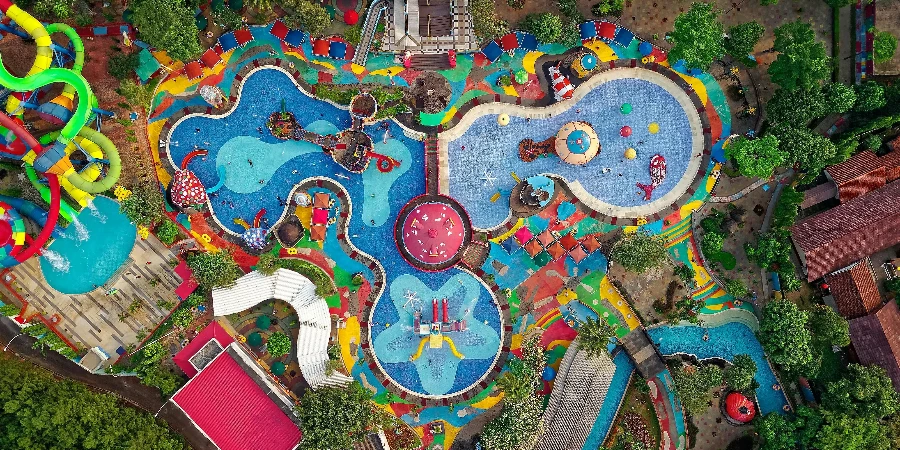Water parks have become a global phenomenon, offering thrilling experiences and a refreshing escape from the heat. As the demand for recreational activities grows, water parks are evolving into major attractions, drawing millions of visitors annually. This article explores the market dynamics of the water park industry, highlighting its growing popularity, key players, and economic impact.
Table of Contents:
Market Overview
Innovative Designs Making Waves
Safety and Quality Standards
Seasonal Trends and Cultural Influences
Conclusion
Market Overview

The Growing Popularity of Water Parks Worldwide
Water parks have seen a surge in popularity across the globe, driven by the increasing demand for leisure and recreational activities. According to Statista, the global water sports equipment market is projected to generate a revenue of US$14.6 billion in 2024, with an expected annual growth rate of 5.76% from 2024 to 2028. This growth is indicative of the rising interest in water-related activities, including visits to water parks.
In the United States, the water sports equipment market is expected to generate a revenue of US$1.1 billion in 2024, with an annual growth rate of 4.34% from 2024 to 2028. The country’s vast coastline and numerous lakes make it a prime market for water enthusiasts, contributing to the popularity of water parks. Similarly, in Spain, the revenue generated in the water sports equipment market is estimated to be US$259.4 million in 2024, with a projected annual growth rate of 3.93% from 2024 to 2028. The country’s extensive coastline and favorable weather conditions further boost the demand for water parks.
Key Market Players and Their Influence
Several key players dominate the water park industry, leveraging their brand reputation, innovative products, and extensive distribution networks to influence market trends. Companies like Johnson Outdoors, Arena, Decathlon, and Aqua Lung are leaders in their respective segments, known for their high-quality water sports equipment and gear. These companies play a crucial role in shaping the market by introducing new technologies and designs that enhance the water park experience.
For instance, Decathlon, a global sports retailer, offers a wide range of water sports equipment, including swimsuits, wetsuits, fins, goggles, and snorkels. Their commitment to innovation and affordability has made them a popular choice among water park operators and visitors alike. Similarly, Aqua Lung, a leading manufacturer of diving equipment, provides high-quality gear that ensures safety and comfort for water park enthusiasts.
Economic Impact and Revenue Generation
The water park industry significantly contributes to the global economy, generating substantial revenue and creating numerous job opportunities. In the United States, the water sports equipment market is projected to reach US$0.89 billion in 2024, with an expected annual growth rate of 8.20% from 2024 to 2029. This growth is driven by the increasing number of water park visitors and the rising demand for water sports equipment.
Moreover, the economic impact of water parks extends beyond direct revenue generation. These attractions stimulate local economies by attracting tourists, boosting hospitality and retail sectors, and creating employment opportunities. For example, in Germany, the water sports equipment market is projected to reach US$0.6 billion in 2024, with an annual growth rate of 3.23% from 2024 to 2028. The country’s strong outdoor culture and numerous lakes make it a prime market for water sports equipment, further driving the economic impact of water parks.
Innovative Designs Making Waves

The Rise of Themed Water Parks
Themed water parks have become a significant trend in the industry, offering visitors an immersive experience that goes beyond traditional water attractions. These parks often incorporate elaborate storylines, characters, and settings to create a unique and engaging environment. For instance, some water parks are designed to resemble tropical islands, ancient civilizations, or even outer space, providing a sense of adventure and escapism. This trend is driven by the desire to offer more than just rides and slides, aiming to create a memorable experience that encourages repeat visits and positive word-of-mouth.
Incorporating Natural Elements for a Unique Experience
Incorporating natural elements into water park designs is another trend gaining traction. This approach not only enhances the aesthetic appeal of the park but also promotes sustainability and environmental awareness. For example, some water parks are integrating natural landscapes, such as rock formations, waterfalls, and lush vegetation, to create a more organic and relaxing atmosphere. Additionally, the use of natural materials and eco-friendly technologies, such as solar panels and water recycling systems, helps reduce the environmental impact of these attractions. This trend aligns with the growing consumer preference for eco-conscious and sustainable leisure activities.
The Role of Advanced Technology in Design
Advanced technology plays a crucial role in the design and operation of modern water parks. Innovations such as virtual reality (VR) and augmented reality (AR) are being used to enhance the visitor experience, offering interactive and immersive attractions that go beyond traditional water rides. For instance, VR headsets can transport guests to different worlds while they float down a lazy river, or AR can be used to create interactive treasure hunts throughout the park. Additionally, advancements in water filtration and treatment systems ensure that the water remains clean and safe for visitors, while smart technology allows for efficient energy management and maintenance.
Safety and Quality Standards

Ensuring Safety in Water Park Attractions
Safety is a paramount concern in the water park industry, and rigorous standards are in place to protect visitors. According to industry reports, water parks must adhere to strict guidelines regarding the design, construction, and operation of attractions. This includes regular inspections and maintenance to ensure that all equipment is functioning correctly and safely. Lifeguards and staff are also trained to handle emergencies and provide first aid, ensuring that visitors can enjoy the attractions with peace of mind. Additionally, signage and safety instructions are prominently displayed throughout the park to educate guests on proper usage and behavior.
Quality Control and Maintenance Practices
Quality control and maintenance practices are essential to the smooth operation of water parks. Regular inspections and preventive maintenance help identify and address potential issues before they become major problems. This includes checking the structural integrity of slides and pools, testing water quality, and ensuring that all safety equipment is in good working order. According to industry standards, water parks must also have a comprehensive maintenance schedule that includes daily, weekly, and monthly tasks to keep the attractions in top condition. This proactive approach not only ensures the safety of visitors but also extends the lifespan of the equipment and reduces downtime.
Regulatory Compliance and Certifications
Regulatory compliance and certifications are critical components of the water park industry. Water parks must comply with local, state, and federal regulations regarding health and safety, environmental protection, and accessibility. This includes obtaining the necessary permits and licenses, as well as undergoing regular inspections by regulatory agencies. Certifications from recognized industry organizations, such as the International Association of Amusement Parks and Attractions (IAAPA), also demonstrate a commitment to high standards and best practices. These certifications provide assurance to visitors that the park meets or exceeds industry benchmarks for safety, quality, and customer service.
Seasonal Trends and Cultural Influences

Peak Seasons and Visitor Demographics
Water parks experience peak seasons during the warmer months, typically from late spring to early fall. During this time, visitor numbers increase significantly, with families, groups of friends, and tourists flocking to these attractions to escape the heat and enjoy a day of fun. According to market data, the demographics of water park visitors vary, with a significant portion being families with children. This influences the design and offerings of the park, with a focus on family-friendly attractions and amenities. Additionally, special events and promotions are often scheduled during peak seasons to attract more visitors and enhance the overall experience.
Cultural Preferences and Their Impact on Water Park Design
Cultural preferences play a significant role in the design and operation of water parks. Different regions and countries have unique tastes and expectations when it comes to leisure activities, and water parks must adapt to meet these demands. For example, in some cultures, there is a preference for more thrilling and adventurous rides, while others may prioritize relaxation and wellness. This can influence the types of attractions offered, the theming and decor, and even the food and beverage options available. Understanding and catering to these cultural preferences is essential for the success of water parks in diverse markets.
Adapting to Local Weather Conditions
Adapting to local weather conditions is another important consideration for water parks. In regions with hot and dry climates, water parks must ensure that there are ample shaded areas, cooling stations, and hydration options to keep visitors comfortable and safe. Conversely, in areas with cooler or unpredictable weather, indoor water parks or attractions with climate control may be more popular. Additionally, water parks must be prepared to handle extreme weather events, such as storms or heatwaves, with contingency plans and safety protocols in place. This adaptability helps ensure that visitors can enjoy the attractions regardless of the weather conditions.
Conclusion
The water park industry continues to evolve, driven by innovative designs, advanced technology, and a commitment to safety and quality. As themed water parks rise in popularity and natural elements are increasingly incorporated into designs, the visitor experience becomes more immersive and memorable. Adhering to stringent safety standards and maintenance practices ensures that these attractions remain safe and enjoyable for all. Understanding seasonal trends, cultural influences, and local weather conditions allows water parks to cater to diverse audiences and provide a consistently high-quality experience. Looking ahead, the industry is poised for further growth and innovation, offering exciting opportunities for both operators and visitors.




